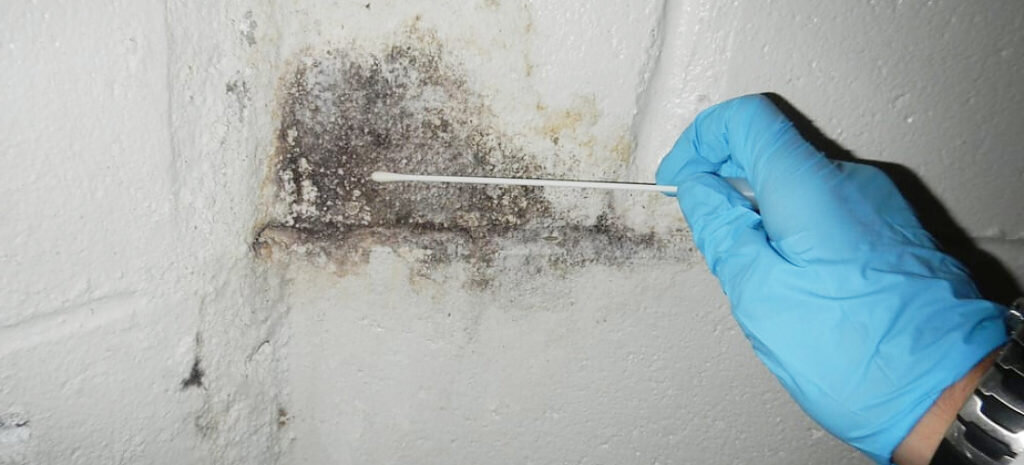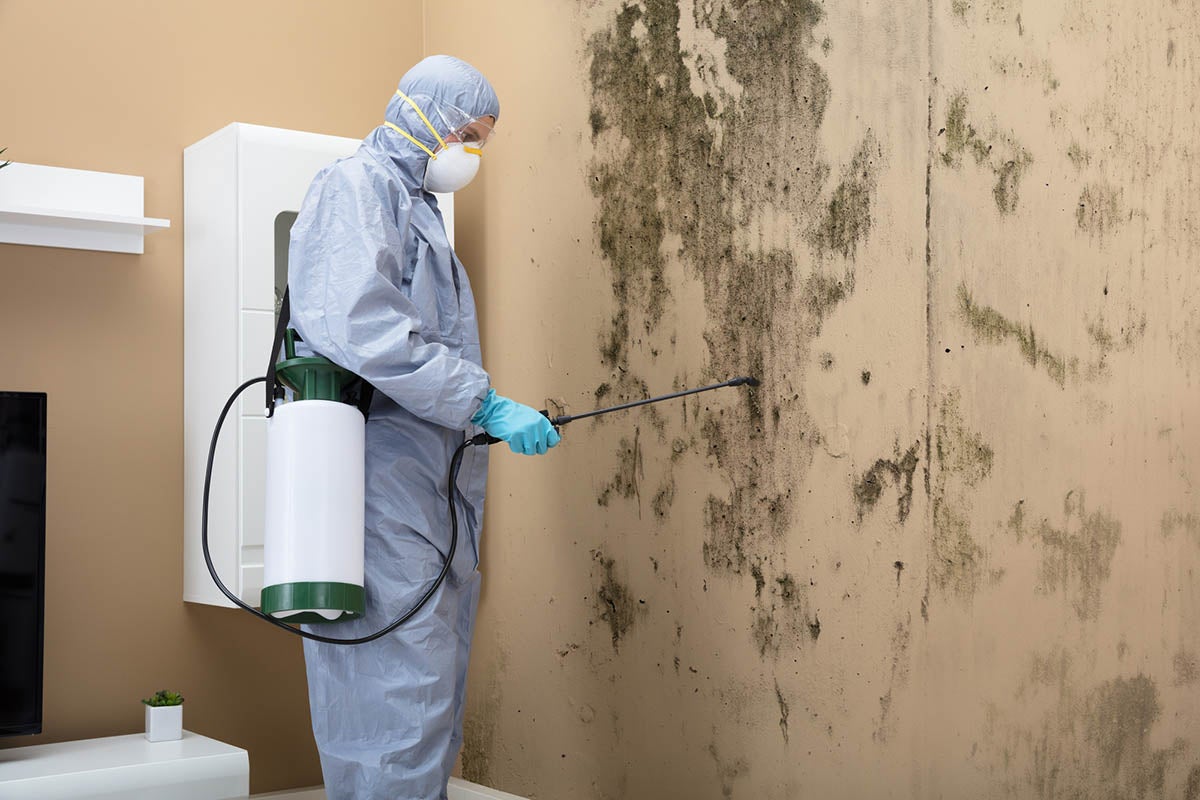Specialist Tips for Message Mold Removal Success
In the world of mold and mildew remediation, successfully getting rid of mold is only half the fight; truth challenge hinges on preventing its reappearance. Post-remediation efforts play a critical duty in making certain a mold-free setting in the lengthy term. By sticking to skilled tips and ideal practices, individuals can safeguard their spaces against mold and mildew renewal and keep a healthy indoor setting. It is in this stage of the remediation process that interest to information and positive actions truly make a distinction.
Screen Moisture Levels Routinely
Routine monitoring of humidity levels is essential in ensuring the effectiveness of blog post mold and mildew remediation initiatives. After finishing mold and mildew remediation procedures, preserving ideal moisture levels is essential to avoid mold re-growth and make sure a healthy and balanced indoor setting. Monitoring moisture degrees permits early discovery of any spikes or fluctuations that could possibly bring about mold and mildew revival. High moisture degrees over 60% produce a favorable environment for mold and mildew to thrive, making routine keeping an eye on a positive step to prevent any future mold issues - what to do after mold remediation.
Making use of hygrometers or wetness meters can assist in accurately determining humidity levels in different locations of the property. These tools give real-time data that enables removal specialists to make enlightened choices pertaining to ventilation, dehumidification, and various other necessary activities to keep optimal moisture levels post-remediation. In addition, establishing a regular schedule for moisture checks, particularly in high-risk areas such as cellars, kitchens, and bathrooms, is an aggressive method to mold avoidance. By continually checking moisture degrees, homeowner can effectively alleviate the danger of mold reoccurrence and preserve a healthy indoor atmosphere post-remediation.
Conduct Thorough Inspections Post-Remediation
Complying with the completion of mold removal procedures, it is necessary to perform detailed inspections to validate the performance of the remediation process. These post-remediation evaluations are vital in guaranteeing that the mold and mildew issue has been efficiently dealt with and that there is no recurrence or continuing to be mold growth. Inspections need to be executed by qualified experts who have know-how in identifying mold and mildew and examining interior air high quality.
Throughout these examinations, different methods such as visual evaluations, air sampling, and surface tasting might be employed to completely evaluate the remediated locations. Visual analyses involve a thorough evaluation of the facilities to look for any type of noticeable signs of mold growth or water damage. Air tasting assists in establishing the airborne mold and mildew spore degrees, while surface sampling can find mold and mildew fragments on surfaces.
Implement Correct Air Flow Techniques
After guaranteeing the effectiveness of the mold and mildew removal procedure via detailed inspections, the following crucial step is to focus on executing appropriate ventilation techniques. Ample air flow is vital in avoiding mold and mildew reoccurrence by controlling wetness levels and advertising air circulation.
Correct ventilation not only help in preventing mold and mildew development however likewise adds to the general health and wellness and comfort of passengers. By ensuring adequate ventilation throughout the residential property, you can lower the threat of mold and mildew regrowth and produce a healthier living environment.

Usage Mold-Resistant Products for Repair Works
To boost the long-term performance of mold and mildew remediation efforts, integrating mold-resistant products for repair services is essential in mitigating the danger of future mold and mildew development. Mold-resistant materials are developed to withstand wetness and hinder mold and mildew growth, making them an essential selection for locations prone to wetness and humidity. When repairing locations influenced by mold, using materials such as mold-resistant drywall, mold-resistant paints, and mold-resistant caulking can help prevent mold reappearance.
Mold-resistant drywall is an excellent option to conventional drywall in locations like shower rooms and basements where moisture levels are greater. When subjected to damp conditions, this type of drywall has an unique find more info finish that withstands mold and mildew development even. Additionally, making use of mold-resistant paints including antimicrobial representatives can even more prevent mold advancement on walls and ceilings.
In areas where moisture prevails, such as shower rooms and kitchens, utilizing mold-resistant caulking around sinks, tubs, and home windows can aid secure out water and protect against mold and mildew from holding in fractures and crevices. By buying these mold-resistant materials during repairs post-remediation, you can considerably reduce the chance of future mold issues and keep a much healthier interior find out setting.
Maintain Tidiness and Address Water Issues
Making sure tidiness and without delay resolving water issues are fundamental practices to support in safeguarding indoor spaces from mold and mildew reinfestation. After mold removal, it is vital to keep a clean atmosphere to prevent the regrowth of mold (Post Mold Remediation). Normal cleaning, cleaning, and vacuuming can assist eliminate any kind of lingering mold spores and stop them from multiplying and clearing up. Furthermore, keeping indoor spaces dry and attending to any kind of water problems without delay is necessary in mold prevention. Leaks, water invasion, or high humidity levels can create the perfect breeding ground for mold and mildew, so it is vital to deal with any type of water-related troubles quickly.
To preserve cleanliness, take into consideration making use of HEPA filters in vacuums and air cleansers to catch mold spores and stop their blood circulation in the air. Moreover, making sure correct air flow in areas vulnerable to moisture buildup, such as bathrooms and kitchen areas, can help keep humidity levels in check. By remaining attentive concerning cleanliness and addressing water issues without delay, you can successfully prevent mold and mildew reinfestation and keep a healthy and balanced indoor setting.
Conclusion

In the world of mold remediation, effectively eradicating mold and mildew is only half the fight; the true challenge lies in avoiding its reappearance. After completing mold and mildew removal treatments, maintaining ideal humidity levels is vital to protect against mold re-growth and make sure a healthy interior environment. High moisture degrees over 60% create a helpful setting for mold and mildew to prosper, making routine keeping track of a proactive step to avoid any kind of future mold concerns.
To enhance the lasting efficiency of mold remediation efforts, integrating mold-resistant materials for fixings is vital in minimizing the threat of future mold growth. After mold and mildew remediation, it is crucial to keep a tidy atmosphere to prevent the regrowth of mold and mildew.